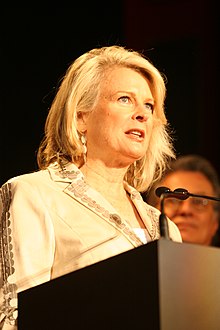
Poster for Catch A Killer
The World Premiere of “Catch A Killer” took place at the Nashville Film Festival on Saturday, September 21st. The idea of a serial killer basing his (or her) kills on famous slasher movies was somewhat original, but the entire film needed work. There are low-budget horror movies out there that show signs of originality (“Cuckoo” comes to mind), but this isn’t one of them. Written and directed by Teddy Grennan, the film starred Sam Brooks (“Fear Street, Part 2: 1978,” “Stargirl,” and “Long, Slow, Exhale”). Grennan is known for “Ravage” (2019) and “Wicked Games” (2021).
The film should have been a natural fit for me, since I was as an active voting member of the Horror Writers’ Association for years (and the author of “The Color of Evil” trilogy”). It wasn’t. I thought the plot, which leaned heavily on familiarity with the horror movie genre would be a natural and that Writer/Director Teddy Grennan had an intriguing concept, but it just didn’t work, for me. What were the weak points? The sound, the cinematography, the story and the over-use of herky-jerky shots of previous gory murders from famous films.
SOUND
For one thing, the screener had sound problems. I actually changed computers three times to watch it. You could not hear the dialogue well on any of three computers, especially at the very beginning of the film. I’d blame my computers, but this was on a desktop and two laptops. Beyond the volume issues, the sounds that were used to accompany the action of the film never seemed to “fit.” At one point, a sound like a drain backing up was used, which had nothing at all to do with what was onscreen.
CINEMATOGRAPHY
Flashes of murders in a herky-jerky fashion opened the film. It was disorienting. Did not encourage me to keep going, but I did. (Once more into the breach!)
PLOT

Leading man Sam Brooks as Otto in “Catch A Killer.”
I found it unlikely in the extreme that the handsome leading man, Otto (Sam Brooks), had joined the police force at 17 by forging his GED and lying about his age. We may need more police officers, but no 17-year-old has been hired to be a policeman by pretending to be 18. Unbelievable. I also wasn’t buying the hot 26-year-old blonde getting Otto fired from the force.
Why a pregnant love interest? Although “Rosemary’s Baby” is mentioned at one point, the connection was tenuous. It was just something thrown into the plot that added nothing, ultimately.
THE SCREENPLAY
The dialogue was unrealistic. At one point the line is “I know this sounds pretty strong.” The term “Yo” was heard just prior to that. Nothing about the screenplay sounded “normal” or “natural.” (“Kojak is back, Baby.” “Kojak” ran from 1973-1978. Nothing like a timely allusion.)
Then there’s the factual content, like the statement that “9 out of 10 murders have forced entry.” Really? We’ve all been watching marathon doses of the Forensic Files for years, so that is not gonna’ fly. 55.7% of burglaries involve forced entry, while 37.8% are unlawful entries and 6.5% of would-be burglars attempt forcible entry. The most common time for break-ins is between 10 AM and 3 PM Those statistics are from a site called Statistica.com. True, it does not mention break-ins that lead to murder, but I think we all know that the cops will be focusing on people who knew the victim(s)—often the spouse, unfortunately. Yes, this is supposed to be a serial killer, but even serial killers have what are known as M.O.’s and the Orion map tie-in was really reaching.
CONCLUSION:

World Premiere of “Catch A Killer” at the Nashville Film Festival on September 21st.
The acting by the principals was adequate. Sam Brooks was photogenic and the supporting female leads were fine.
As I’ve said in other reviews, the actors (or actresses) are only as good as the material they are given. I will be surprised if this film rises above the 4.0 to 4.5 ratings that previous efforts by this writer/director/producer have garnered. I was also irked by the obvious attempt to “coast” on the much bigger movie “To Catch A Killer.” I have had this happen to me many times with my novel trilogy “The Color of Evil.” Somebody pops up with just “Color of Evil” and takes ads on your Amazon page, etc.
It is really annoying to have a different creator attempt to “coast” on the good reviews you may have built up with a similarly named film or book. Yes, it is legal, but maybe create your own title. Having said that, I learned only years later that there was a short story (Stephen King) with the same title, so perhaps that is what happened here and there really was no attempt to “use” the much better-known film. I hope that’s the explanation, except that “To Catch A Killer” seems much more widely disseminated as a title.
This one just didn’t work for me. Good luck to all on future ventures. After all, even Matthew McConaughy started out with “Texas Chainsaw Massacre” and look at him now.
















































 I was intent on hearing the band, as I had seen video of the lead on the bass throwing that thing around like it was a child’s toy. Will (Bill) needs a fairly high ceiling to do it justice and said he had developed a bit of a bad knee from going down on one knee to hoist the rather large fiddle into the air.
I was intent on hearing the band, as I had seen video of the lead on the bass throwing that thing around like it was a child’s toy. Will (Bill) needs a fairly high ceiling to do it justice and said he had developed a bit of a bad knee from going down on one knee to hoist the rather large fiddle into the air.